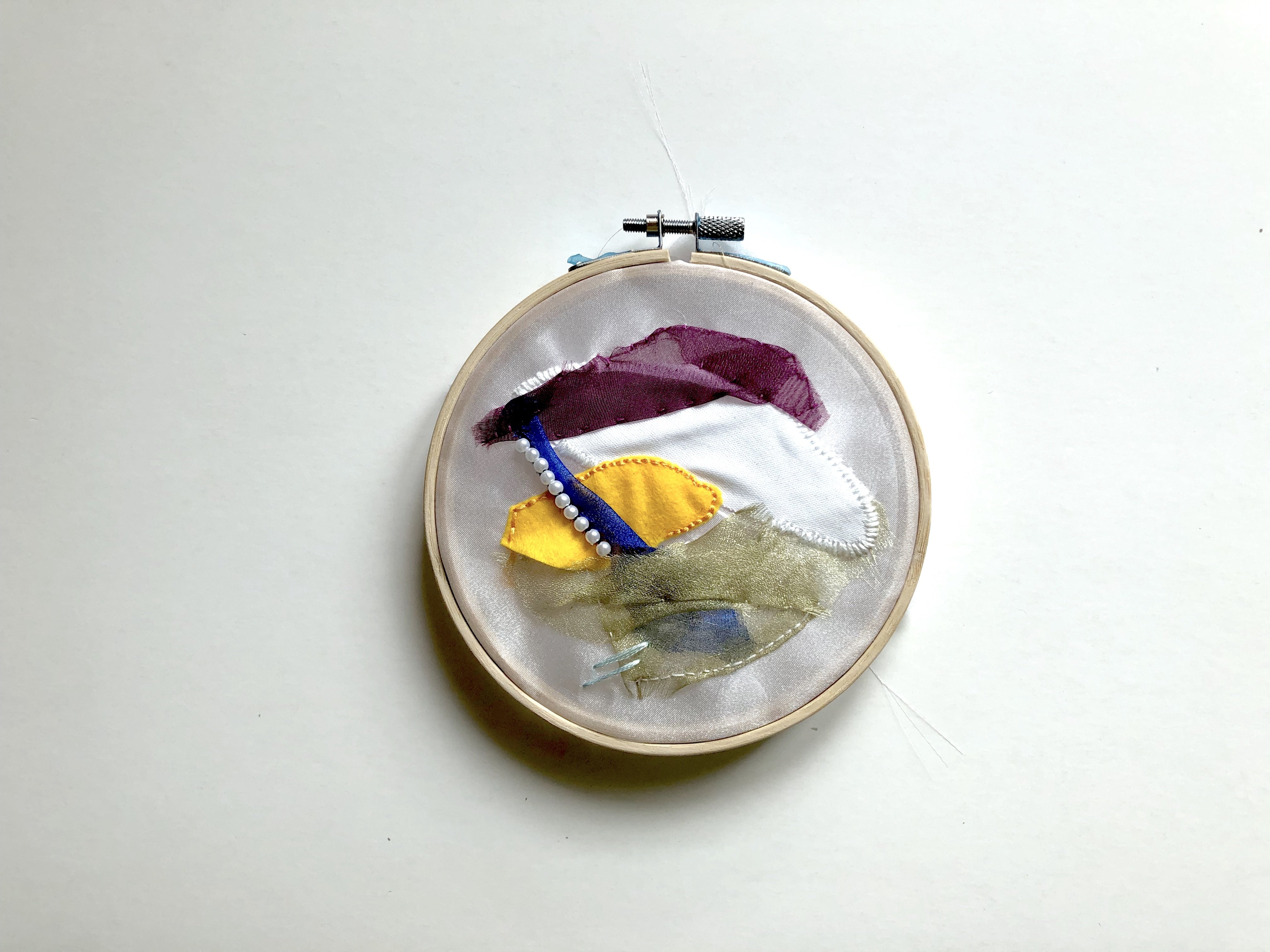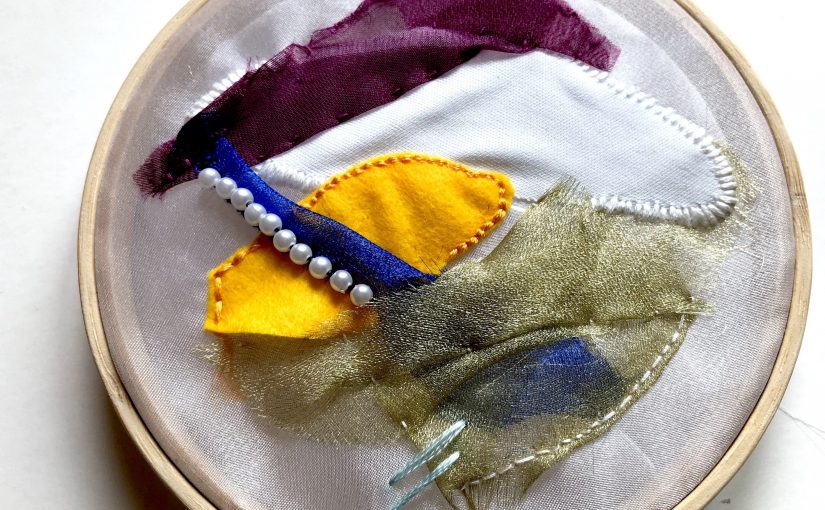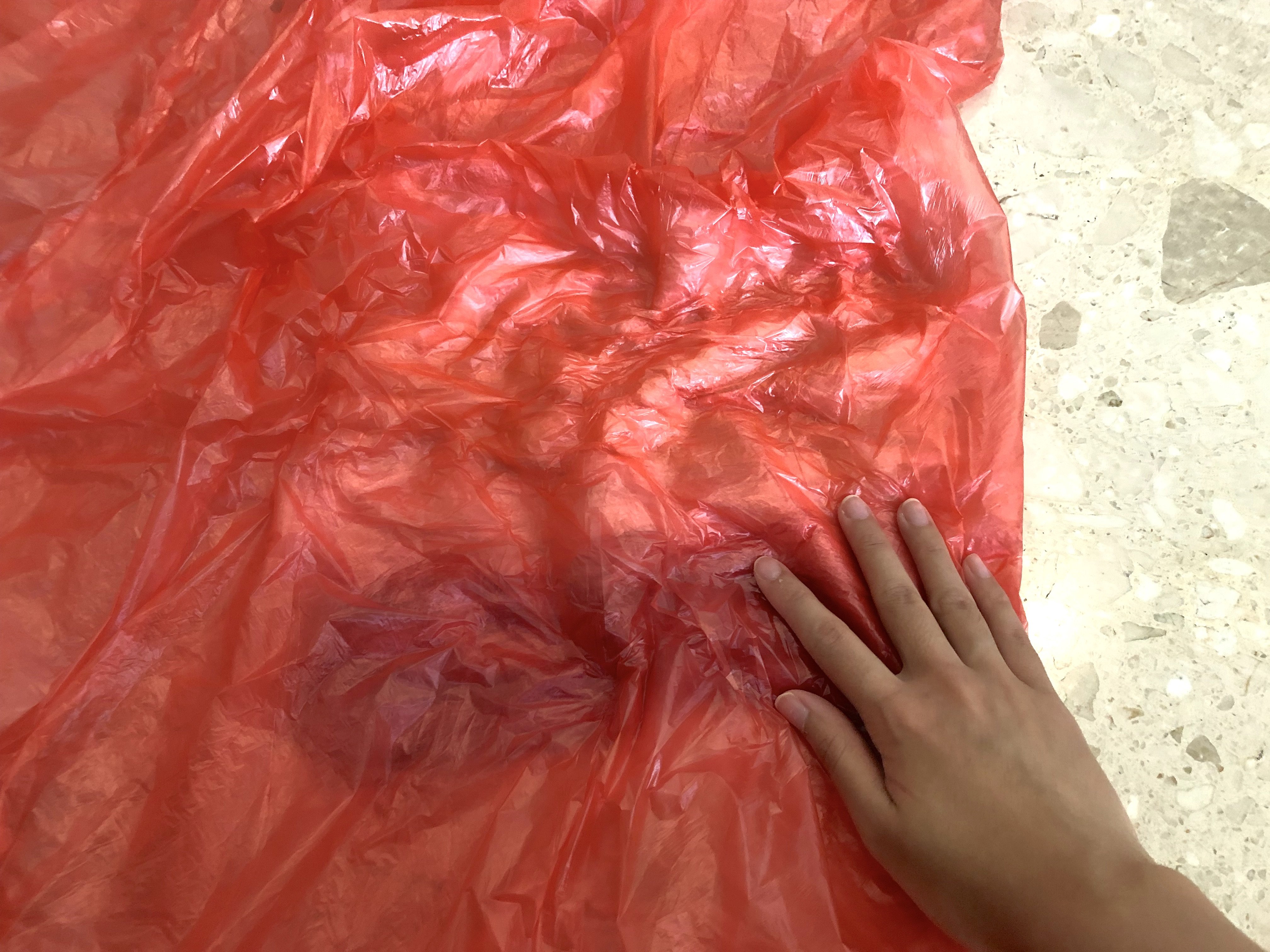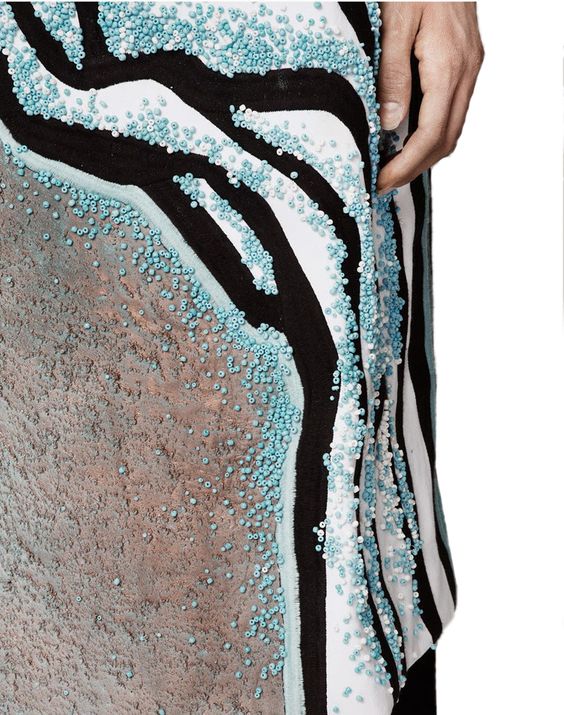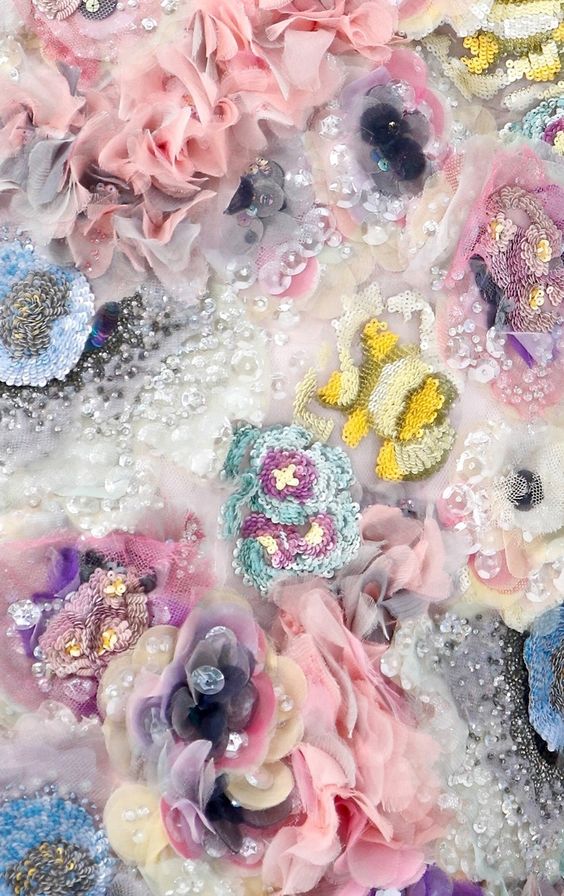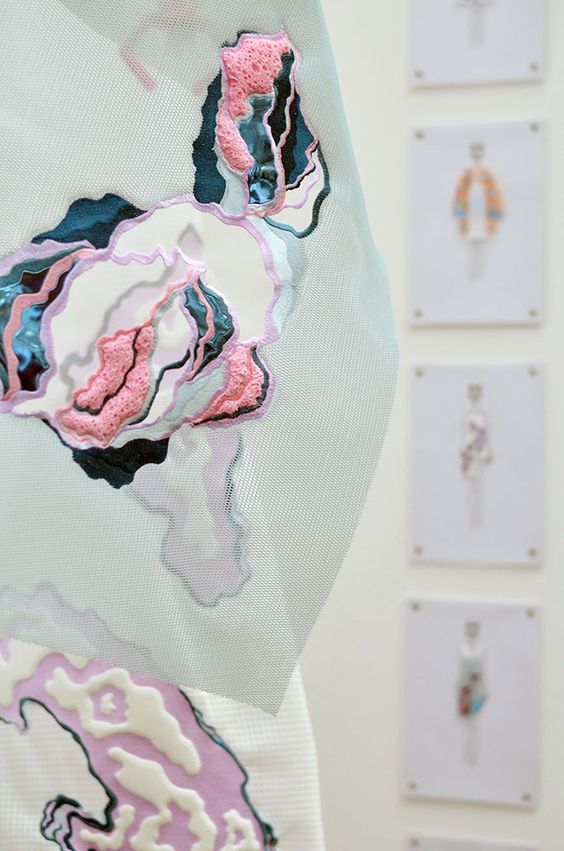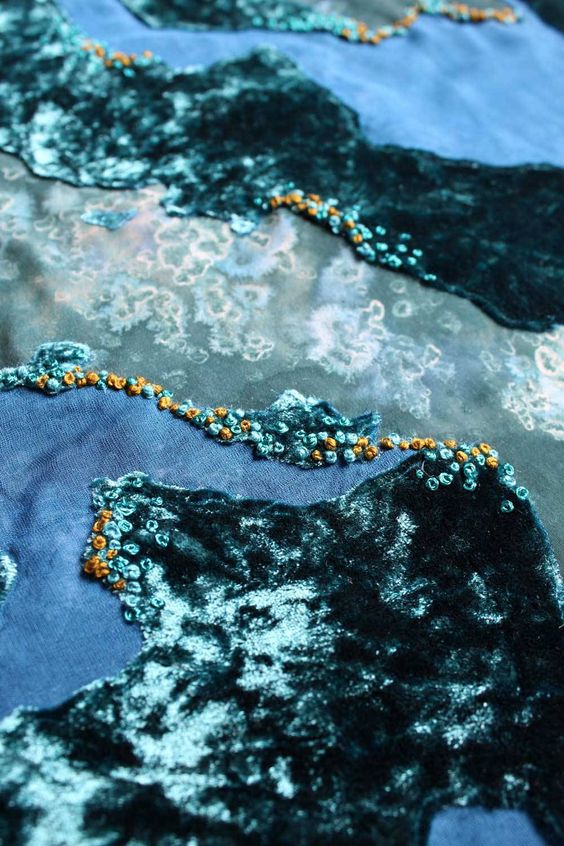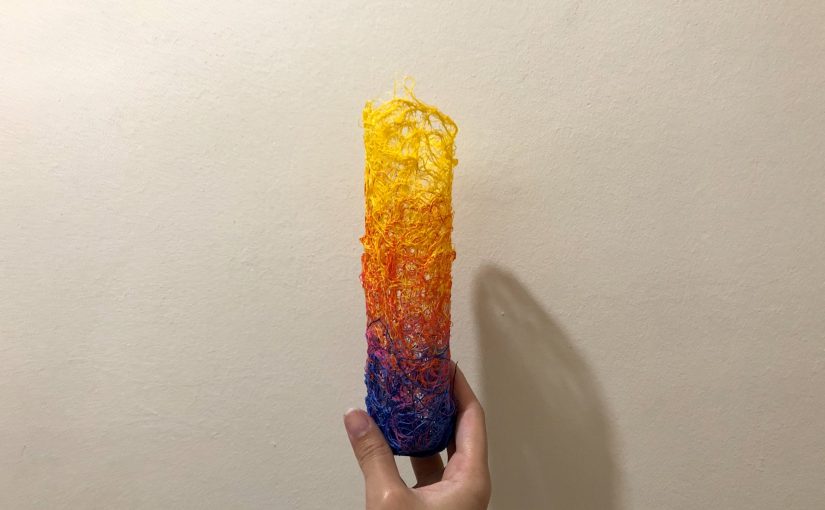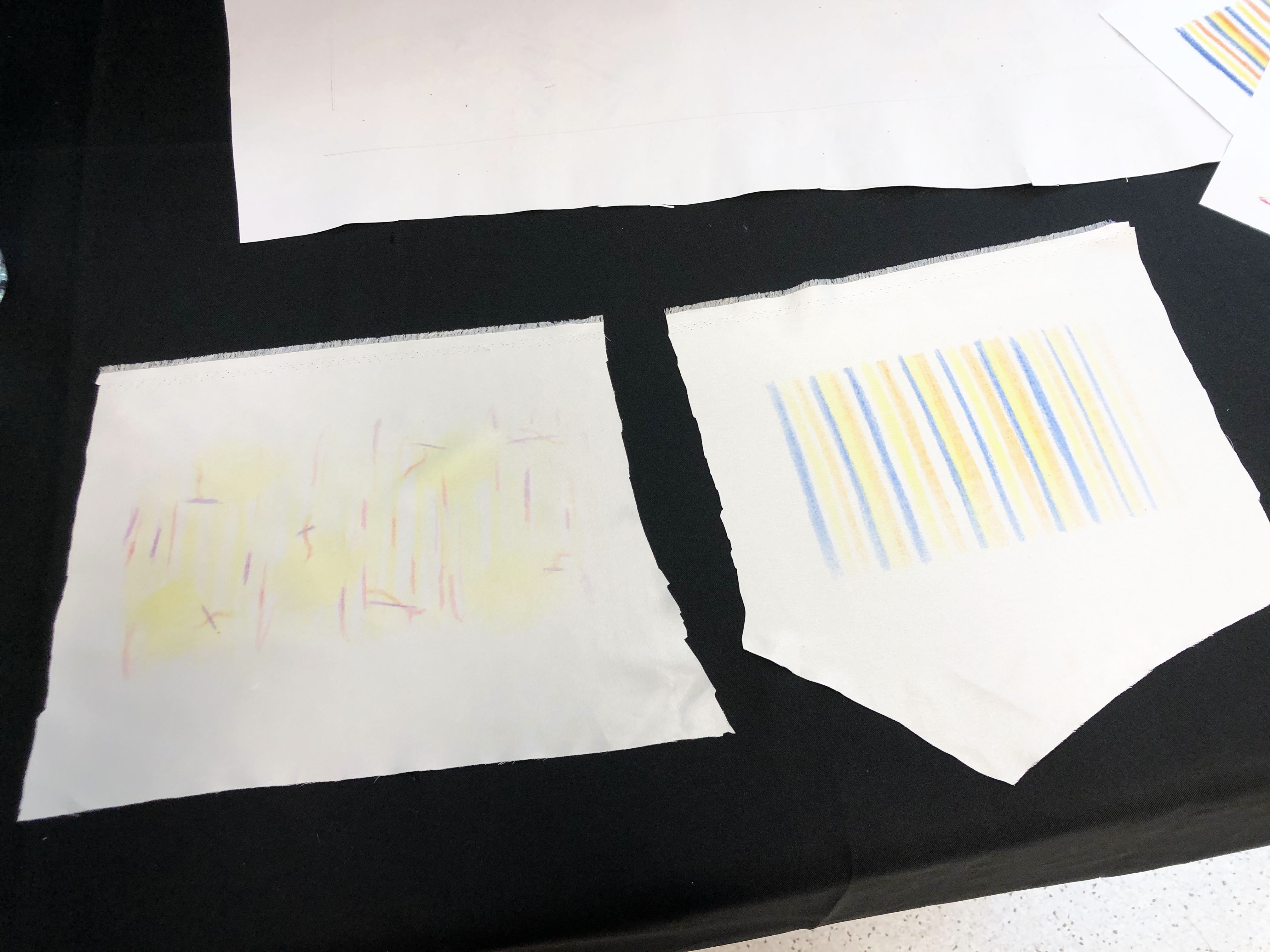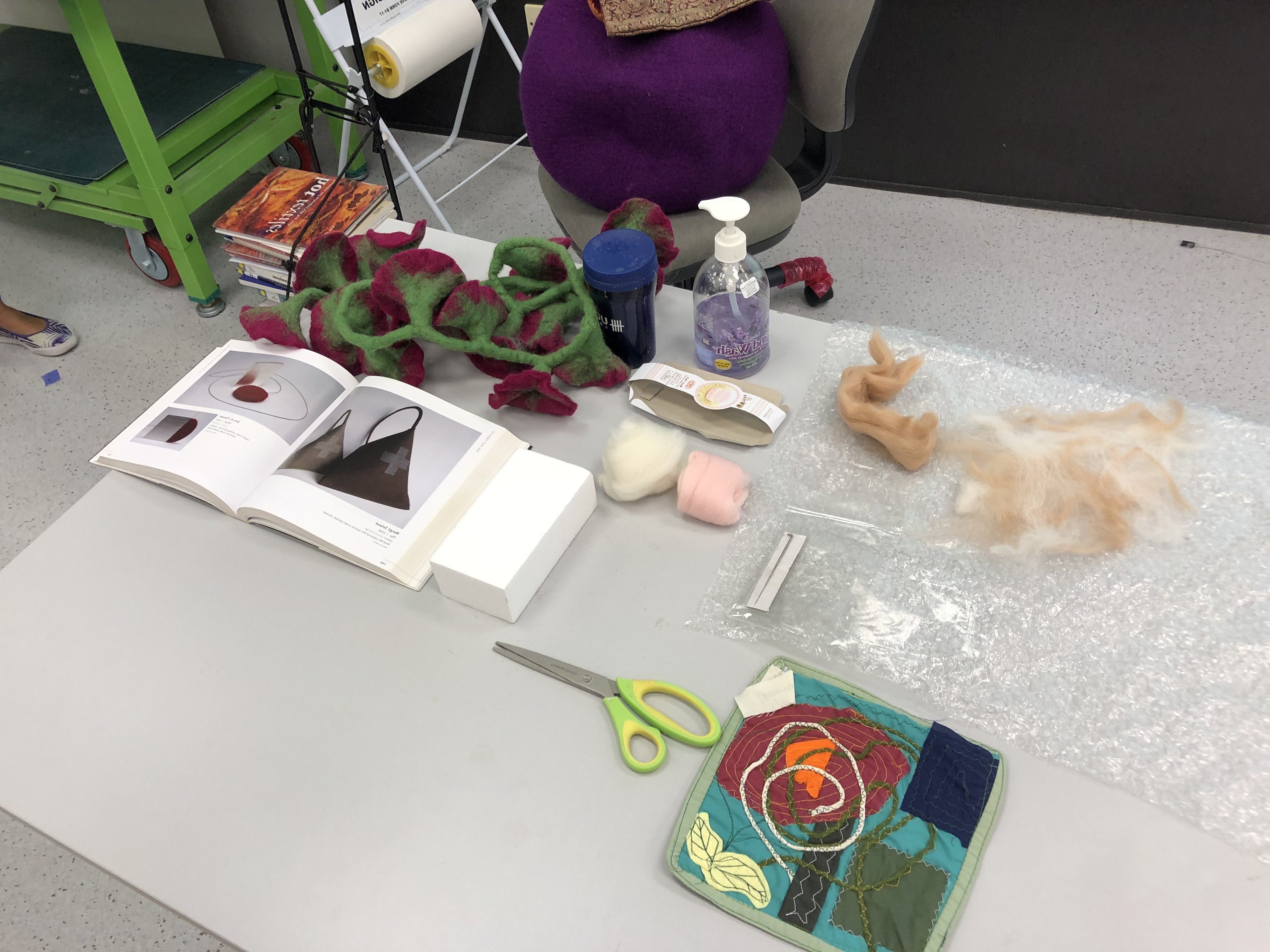
For the needle felting class, we were taught a few techniques of different feltings:
1. Wet Felting
Welt felting is where the natural wool fibres, stimulated by friction and lubricated by moisture (soap water), move at a 90 degree angle towards the friction source and in effect making little “tacking stitches. The wet felting process makes the felt tighter, locking them together to become a stiff and thick wool that resembles a blanket. Wet felting works by spraying some warm soapy water onto the felt, and you’ll have to “mix” or blend the soapy water with the felt together by rubbing it in. By rubbing the felt onto one another, it creates an effect that makes “tacking” stitches, which helps to tighten and lock the felt together. This will thus create a stiff, and thick wool.
2. Needle Felting
Needle felting is created dry, without the use of water. The needles are referred to as “barbed” needles which in fact have notches along the shaft of the needle that grab the top layer of fibres and tangle them with the inner layers of fibres as the needle enters the wool. Since the notches faces downwards on the needle, they do .not pull the fibres out as the needle exits the wool, but rather “stitch” the wool together when it’s pressed in. By using a single needle or a small group of needle, fine details can be achieved with this technique.
3. Nuno Felting
The Japanese word “Nuno” means cloth. The technique bonds loose fibre, usually wool into a sheer fabric such as silk gauze, creating a lightweight felt. The fibres can completely cover the background fabric, or they may be used as a decorative design that allows the backing fabric to show. Nuno felting often incorporates several layers of loose fibres combined to build up colour, texture, or design elements in the finished fabric. The nuno felting process is particularly suitable for creating lightweight fabrics used to make clothing. Fabrics such as nylon or muslin, or other open weaves can be used as the felting background, resulting in a wide range of textural effects and colours.
For now, this is the needle felt technique. I bought a really cute hedgehog felt kit from Daiso that I wanted to try! It’s my first time doing needle felting and I was clueless on how it is going to work. I only know that there’s alot of poking involved from all the videos that I’ve seen hahaha. So… lets start it now shall we!
First of foremost, of course you’ll need some: Felt and Felting needle.
Apparently, felting needle comes in different quantity, there are those that comes in twin needles while the rest are individual needles. I guess for the twin needle, it makes the process faster?
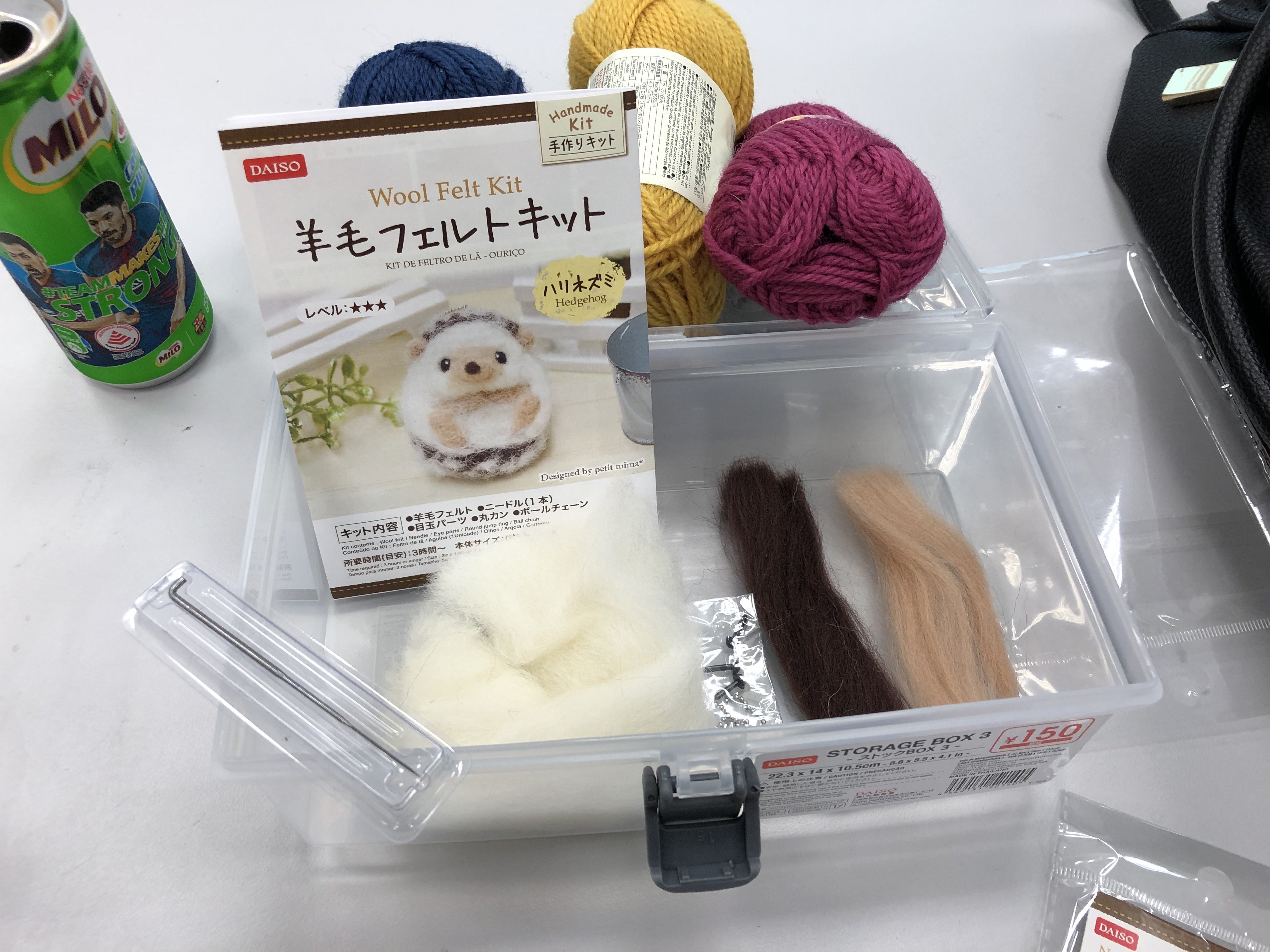
Following the hedgehog guide, I was told to segment the pieces for the various body parts of the animal.

So lets start poking! It took me soooo long to form the ball below, which is the hedgehog body. I never knew it’s gonna take THAT long. Now I know why all the felt crafts are so expensive because it’s so labour extensive. And I kept poking the my finger sigh, and it’s the same exact spot that I kept hurting myself!
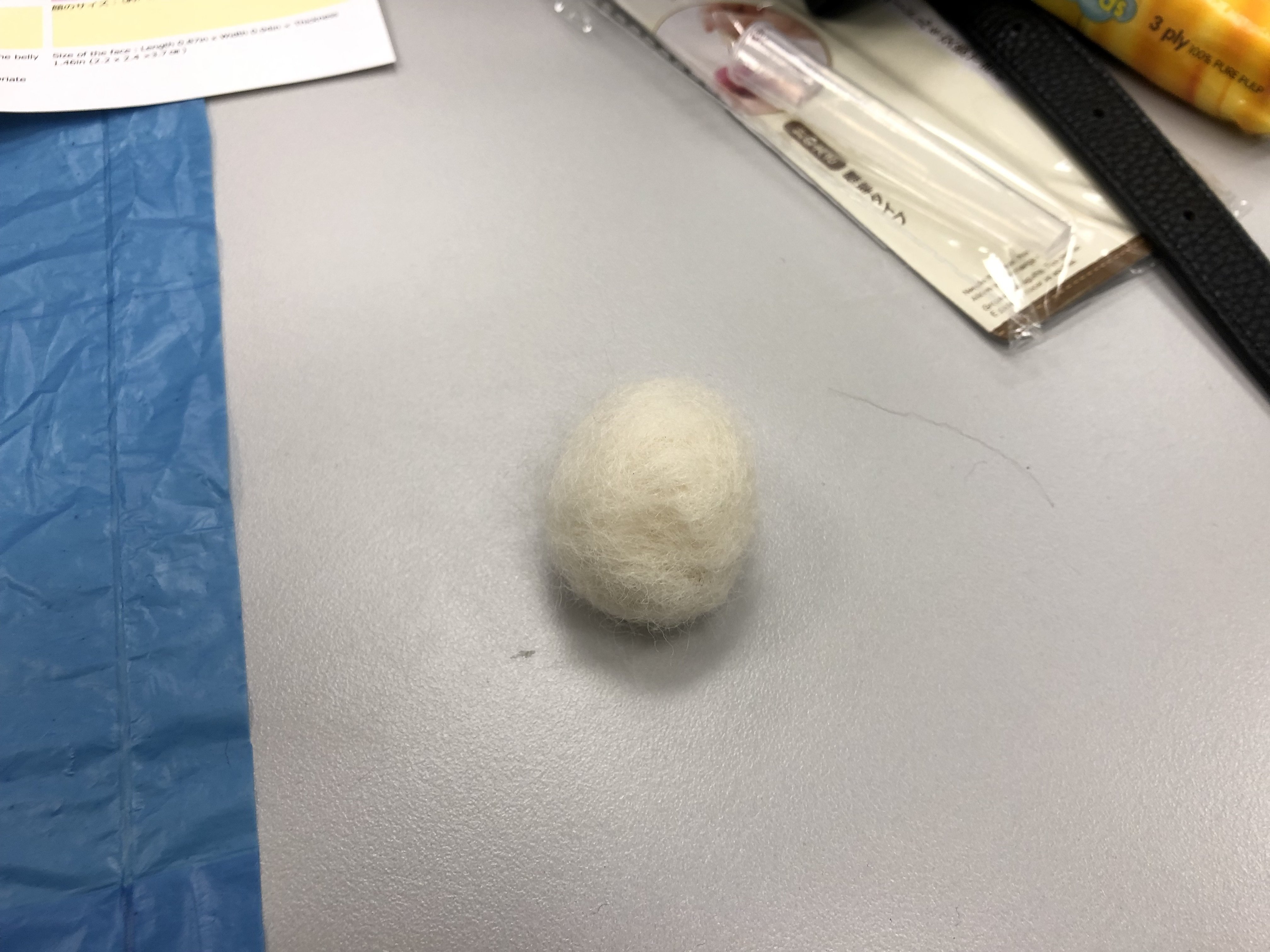
As you can see… I’m trying my very best to form the hedgehog nose. This was already 2 hours into our lesson and I’ve yet to complete a quarter of the hedgehog.
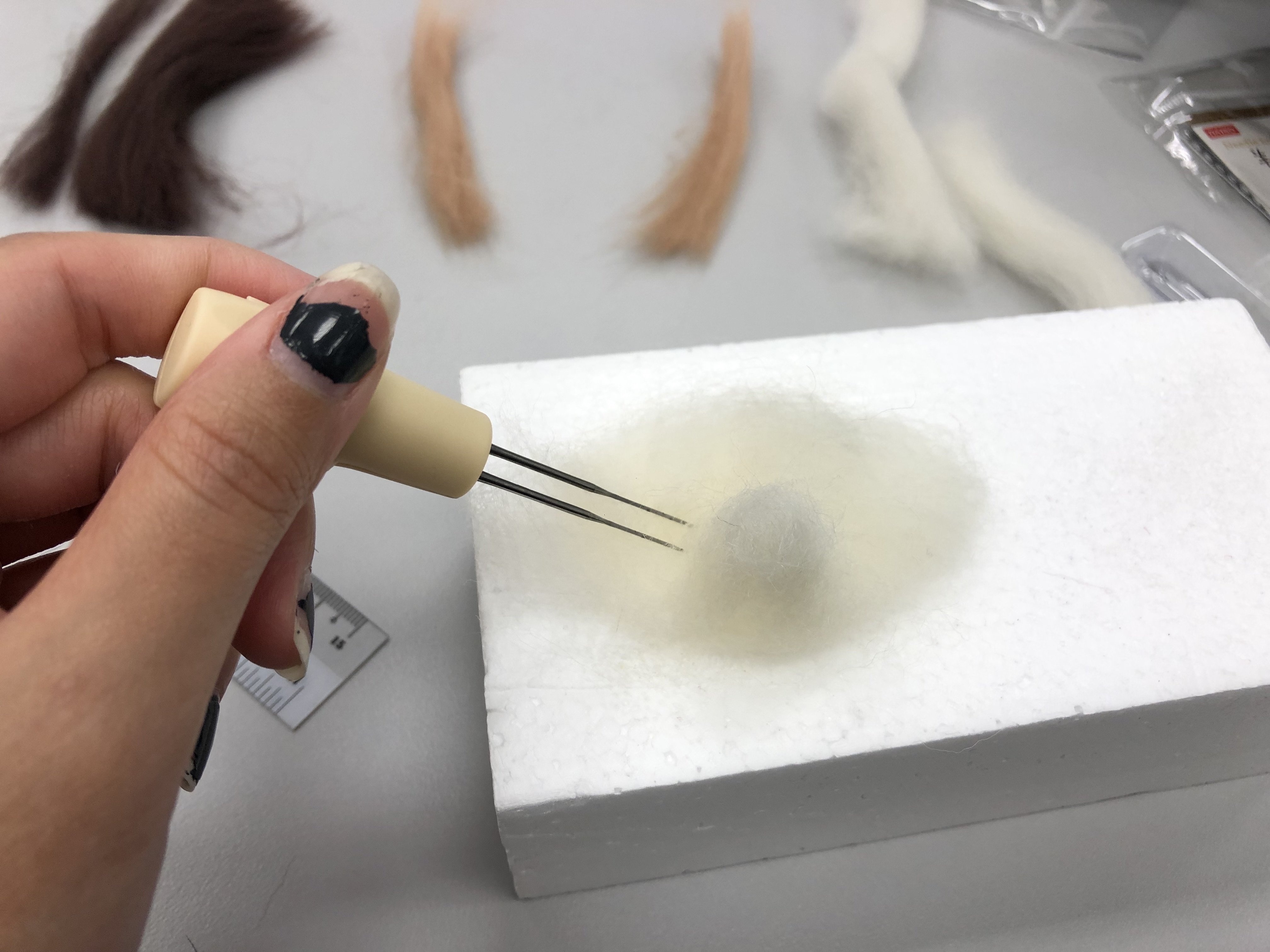
Now I’ll have to attach the nose onto the hedgehog body. Poke poke poke them in. It looks a little crazy now but please believe in me, it will be something.. that looks hedgehog-ish soon.


TADAH! And here, I present you the hedgehog body with da nose! Ok and this was taken at the end of the lesson. I took me 3 HOURS to make such a small part. I can’t imagine how long it’s gonna take me to complete the rest of the hedgehog.
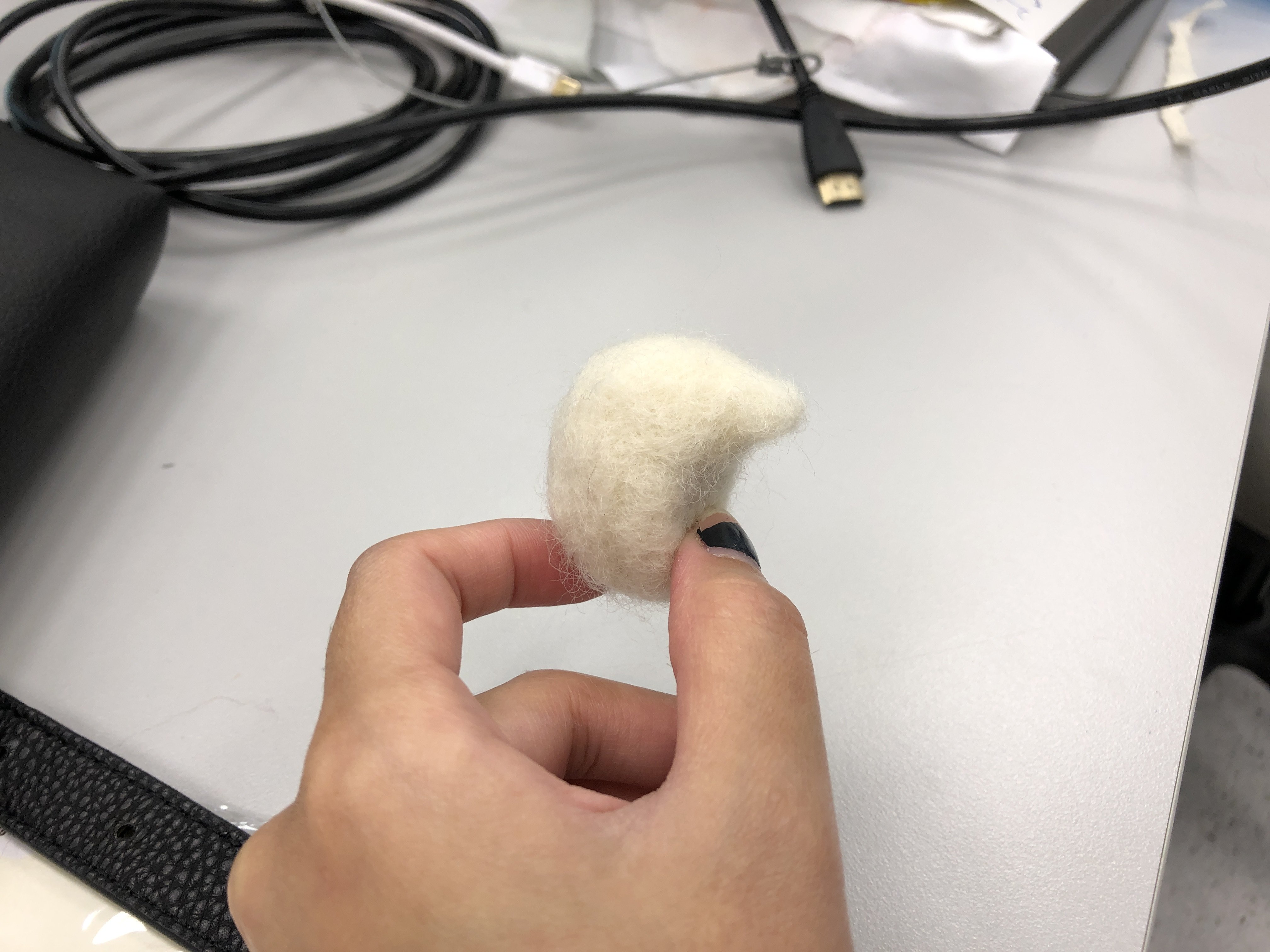
DAY 02 of Felt Making.
As you can see in the background of my work, I was binge watching some show while aimlessly poking my felt. And now… I present you 3/4 of my hedgehog, with a pair of new ears and a nose that is a lil too big for him. But hey… everyone has their own imperfections right :’) so lets not put too much pressure on this little guy here shall we?
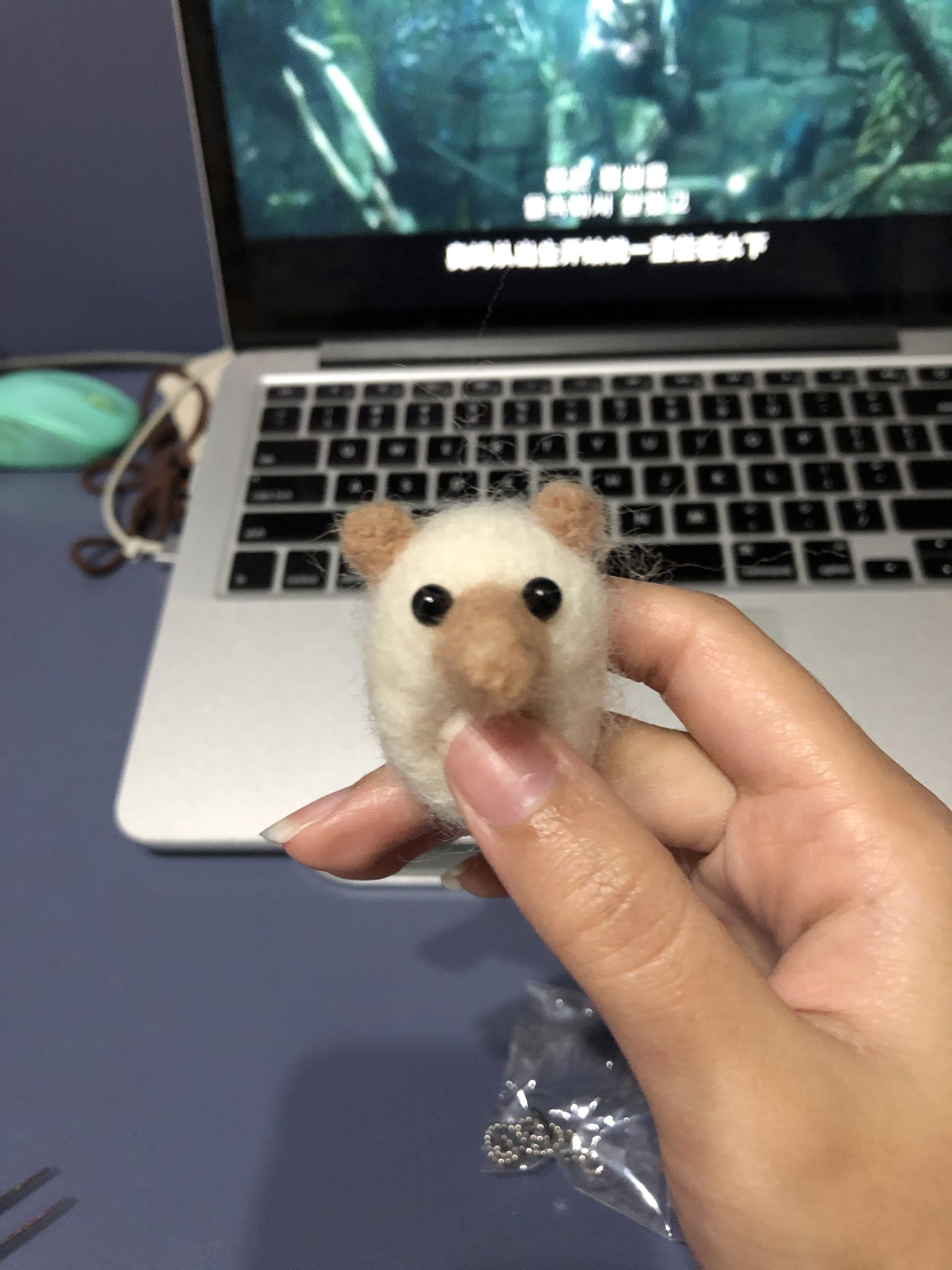
This is not the end of my hedgehog… I will check back again once I’ve finish giving him a cute little hairstyle 😉
Wet Felting
Hi guys! I’m back again. Finally, I’ve the time to proceed with wet felting. I was looking through some wet felting inspiration and saw some of the designs which were really cool! And it made me regret not buying more colours as I could try to achieve the same look haha. So here are some inspos I found! Thought that I should share it here with you guys 🙂
Materials you’ll need:
Felt
Liquid Soap + Warm water
Spray
Plastic covers (as base to rub your felt on)
Steps for Wet Felting:
01 Prepare your work station, overlay a huge plastic bag
02 Lay your felt accordingly to the pattern you want to achieve
03 Spray the solution of water+soap onto your felt
04 Overlay the other end of your plastic onto the felt. Start rubbing the felt so as to intertwine the felt weaves together
05 Use a rolling pin and roll the felt to tighten it even more
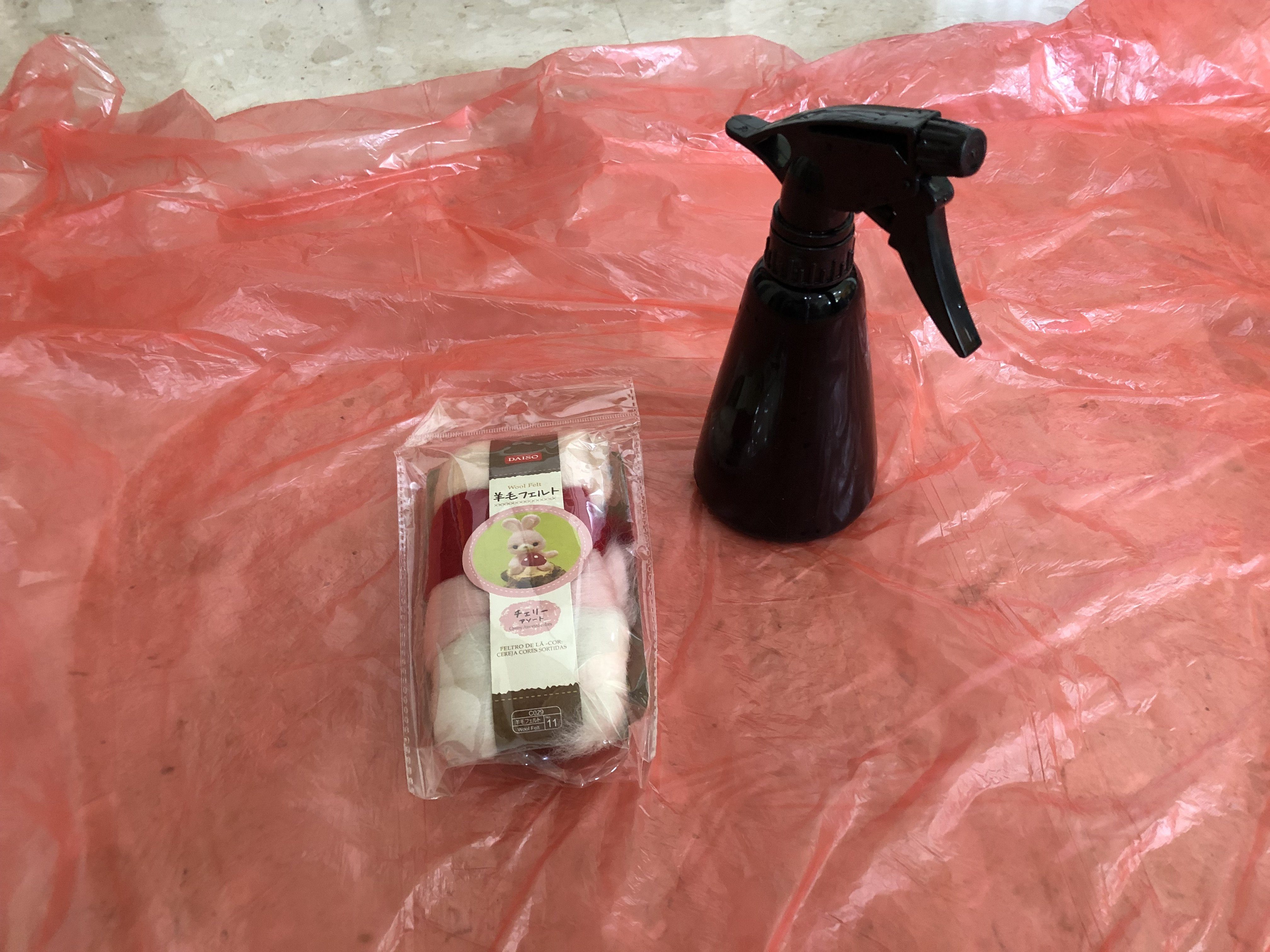
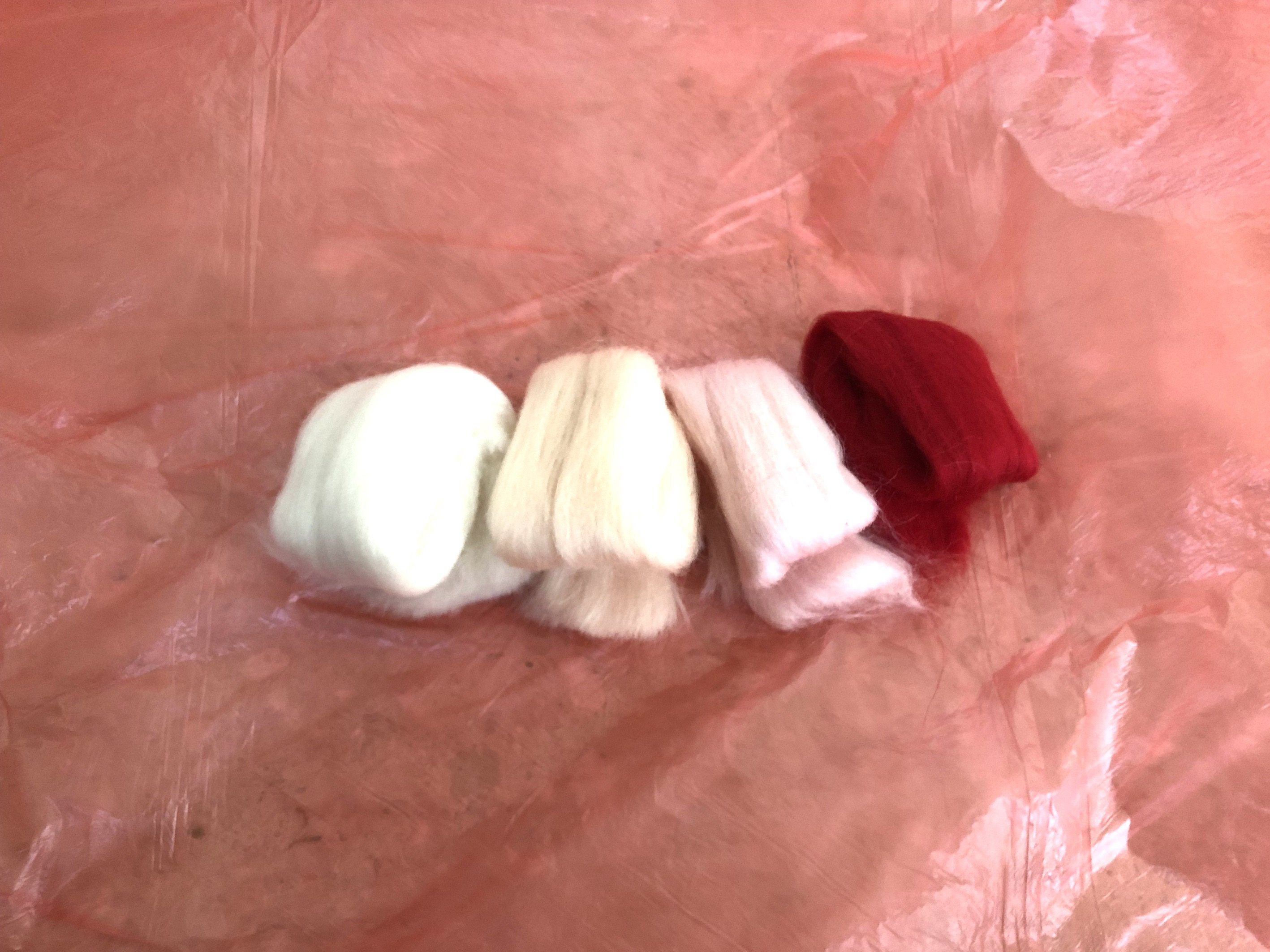
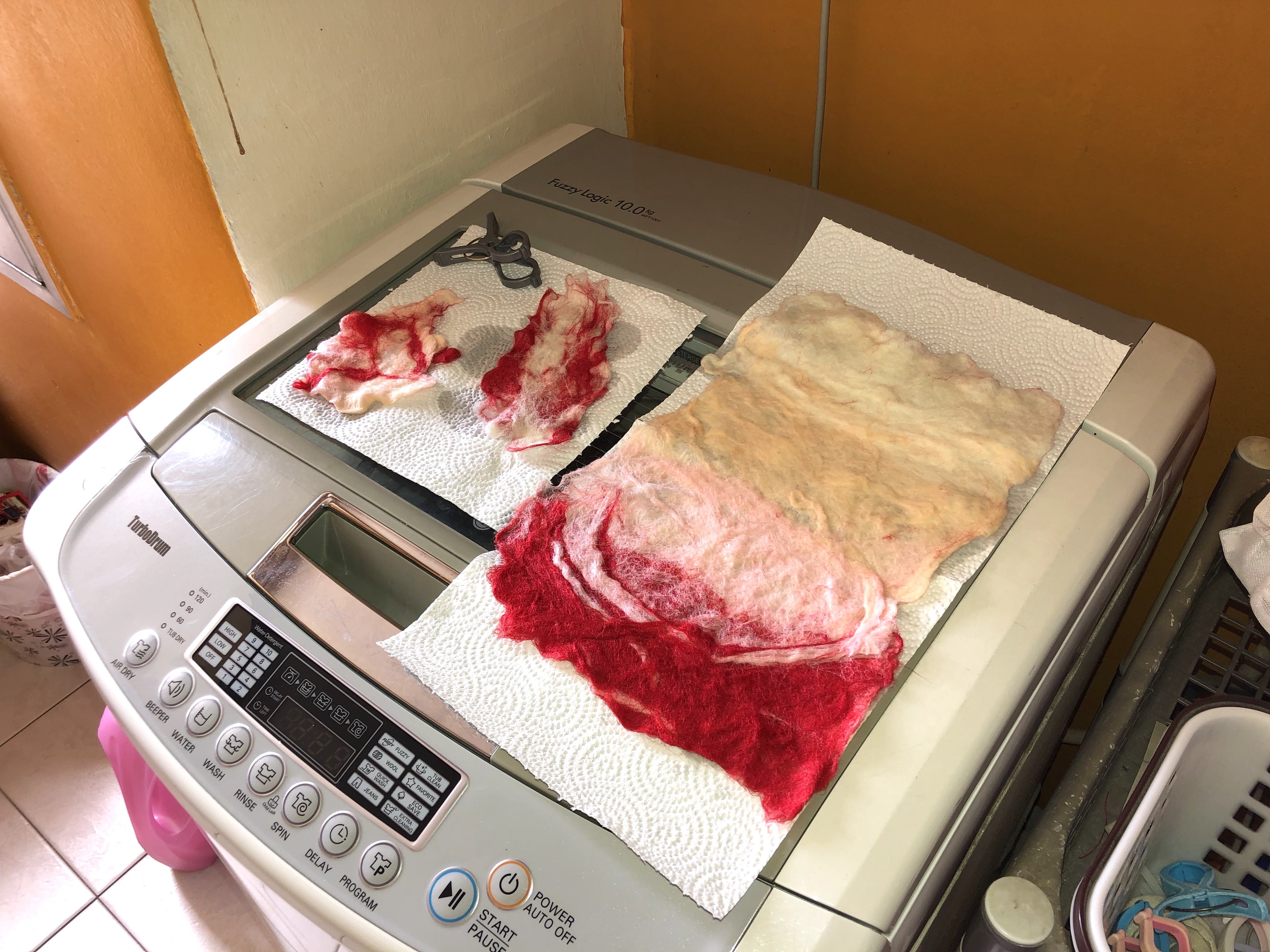
Leaving them to dry before taking a picture of the final product!
(so i got some mixed comments from my dad saying that the mini ones resemble something gross… lets just leave it here for you guys to think alright hahaha)
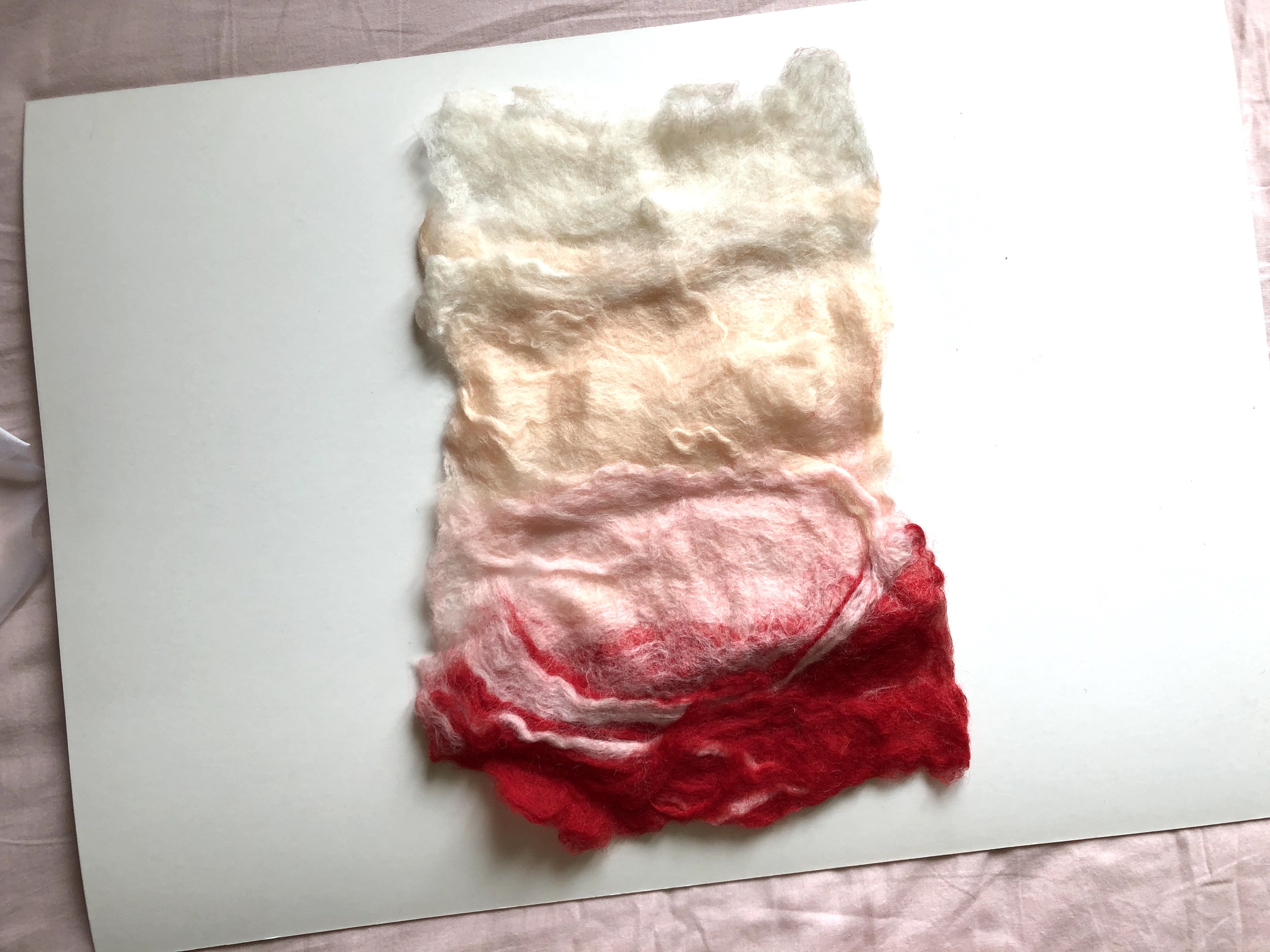
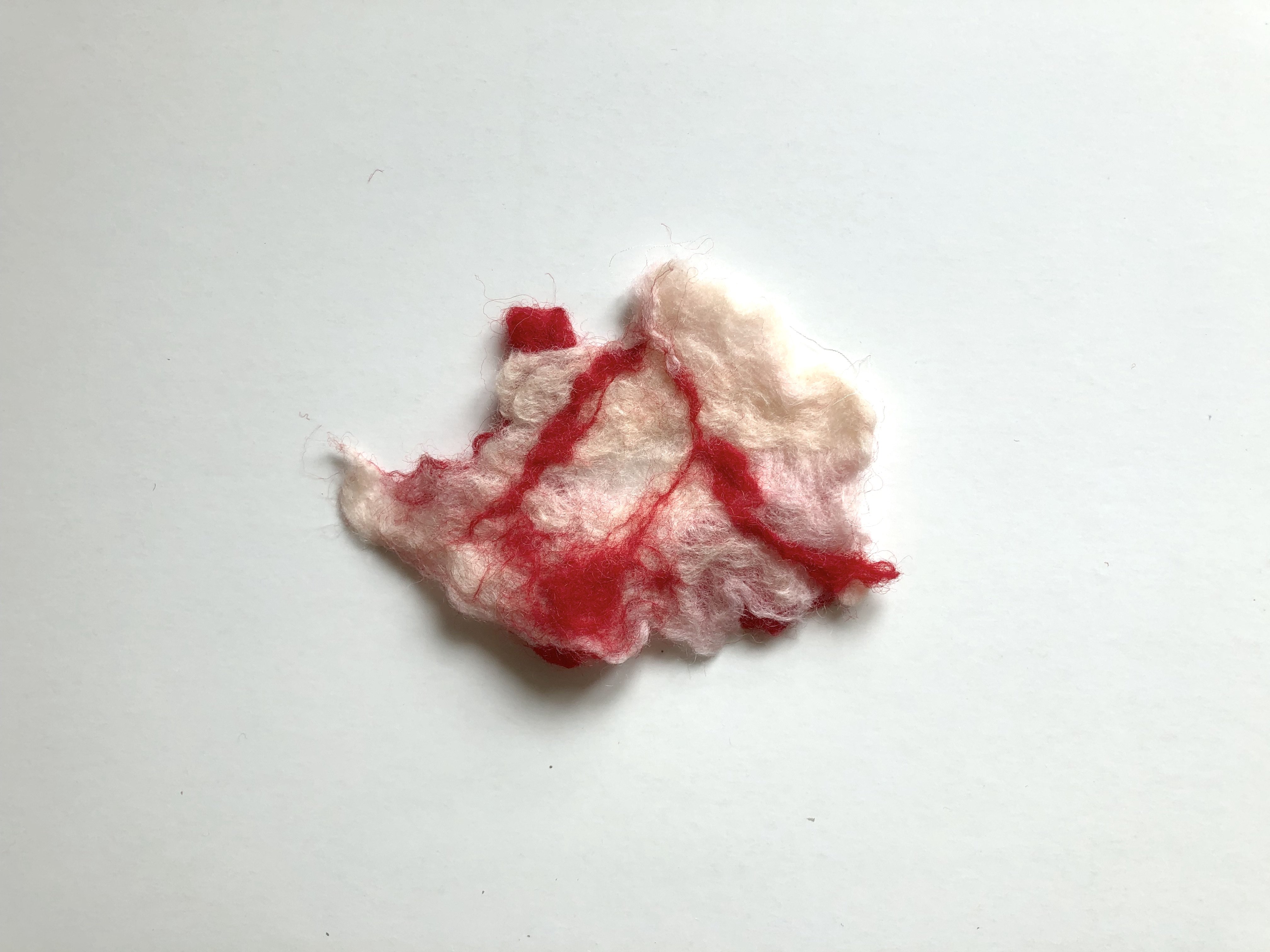

Overall, the making of wet felting is so different from needle felting. And of course, the achieved texture and results are so different as well. It’s interesting how one material such as felt could be made into various outcomes and products simply by differing the techniques used. In addition, what it’s amazing how we can control the density of the felt simply by rubbing them together. Felt, such a soft material could eventually become something tough and dense. That’s really cool!
A P P L I Q U É
Originates from the Latin applicō “I apply” and subsequently from the French appliquer “attach”
Appliqué is ornamental needlework in which pieces of fabric in different shapes and patterns are sewn or stuck onto a larger piece to form a picture or pattern. It is commonly used as decoration, especially on garments. The technique is accomplished either by hand or machine. Appliqué is commonly practised with textiles, but the term may be applied to similar techniques used on different materials. In the context of ceramics, for example, an appliqué is a separate piece of clay added to the primary work, generally for the purpose of decoration.
Basically, applique reminds me of those blankets that grandma used to make. Attaching various fabrics together and creating a blanket which looks like a collage of different images and patterns. I was quite stressed as I kept thinking that’s how applique is supposed to be, simply by attaching various fabrics together. Then I was thinking… how do I make it pretty? Hahaha. And then it crossed my mind, why don’t I mix embroidery with applique? That works as well right? As I’ve embroidered before for my past projects, I had tons of threads and thought that it would be really cool and pretty if I were to combine both.
I was then inspired by garments that uses beadings and appliques, here are some examples.
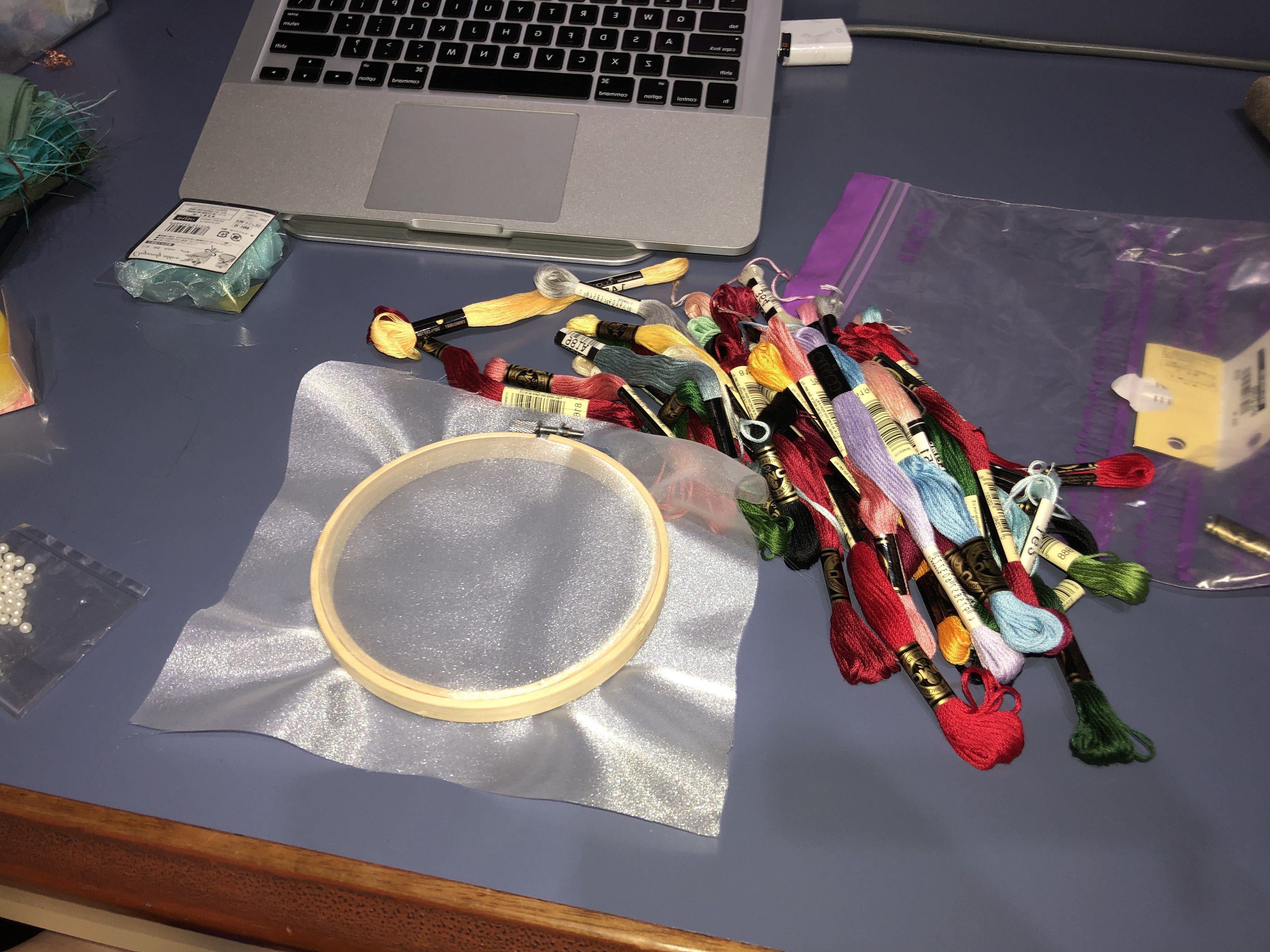
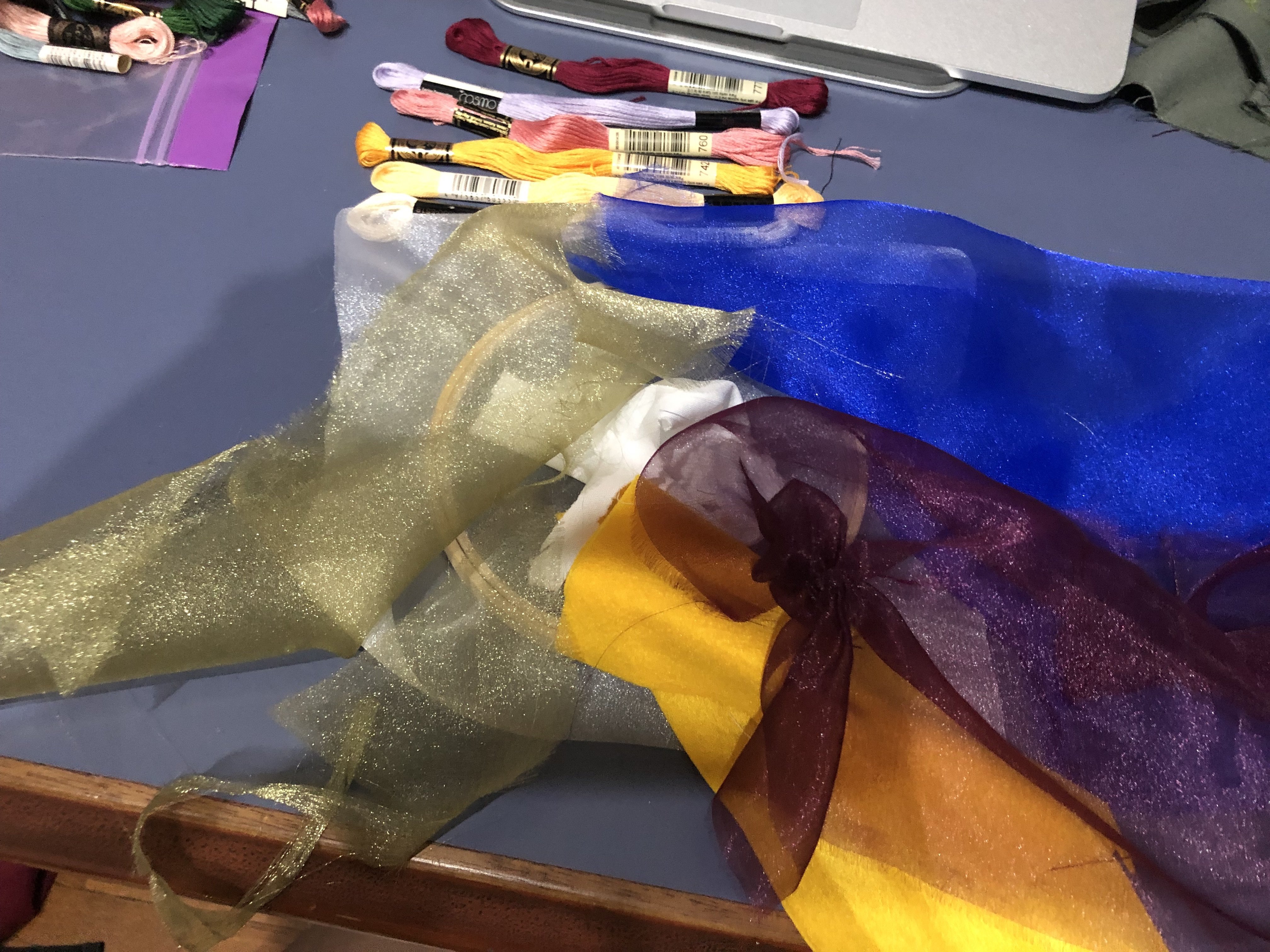
Laying out how I wanted my assemble to look like and pinning them in place before I start sewing!
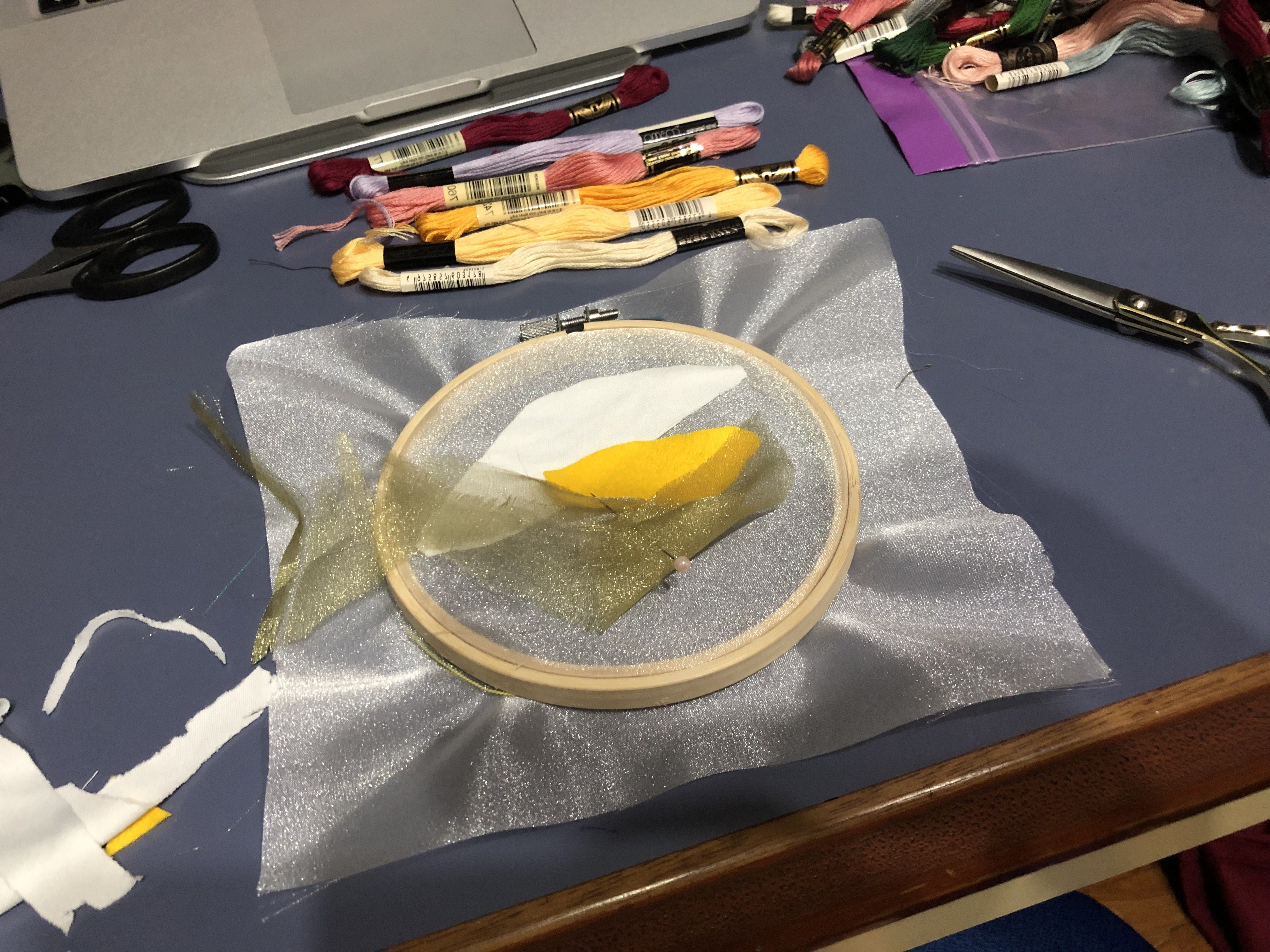
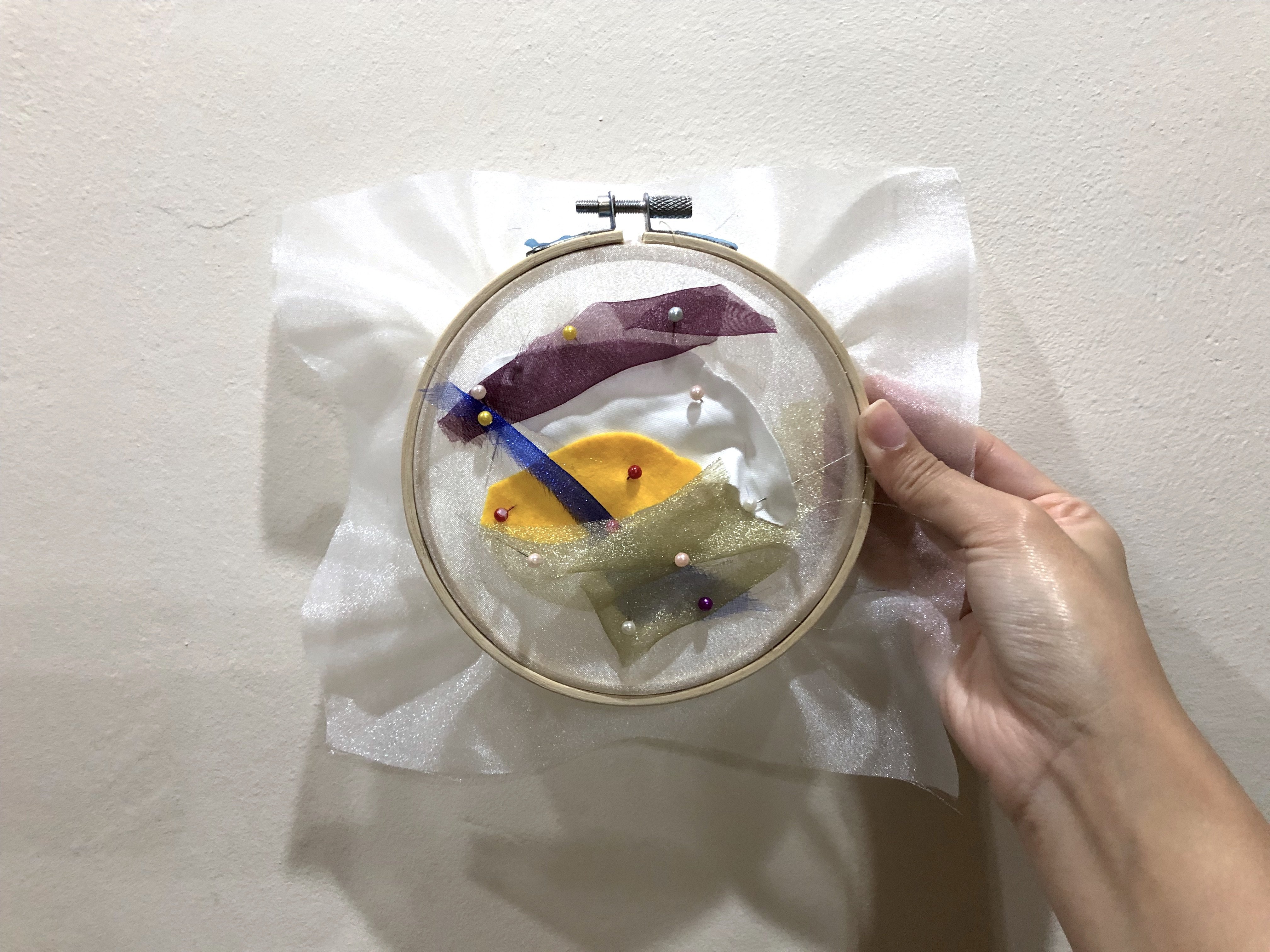
Thought it would be cute if I were to add some white pearls that I had in hand.
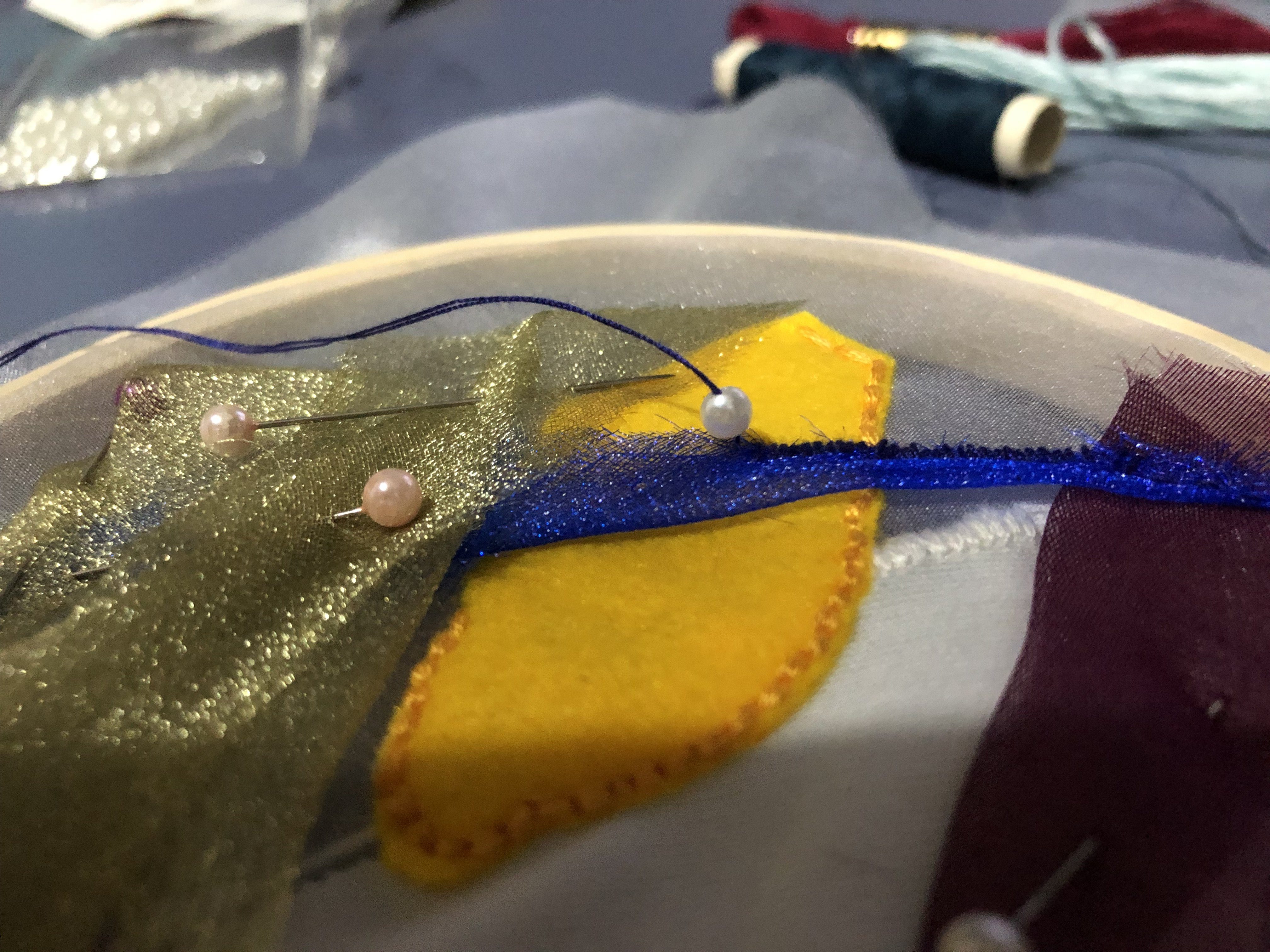
And tadah! Here is the final product of my applique + embroidery. I’m very happy with the outcome but I felt I could add more embroidery details and it would be really pretty if I had some sequins that I could add onto it. Between applique and felting, I definitely enjoyed applique more as I get to try out with different textures and materials. However, felting is still really cool as a simple material like felt could achieve various textures. I’m so glad to be able to try out such techniques that I’m sure would be applicable to me in the future.
